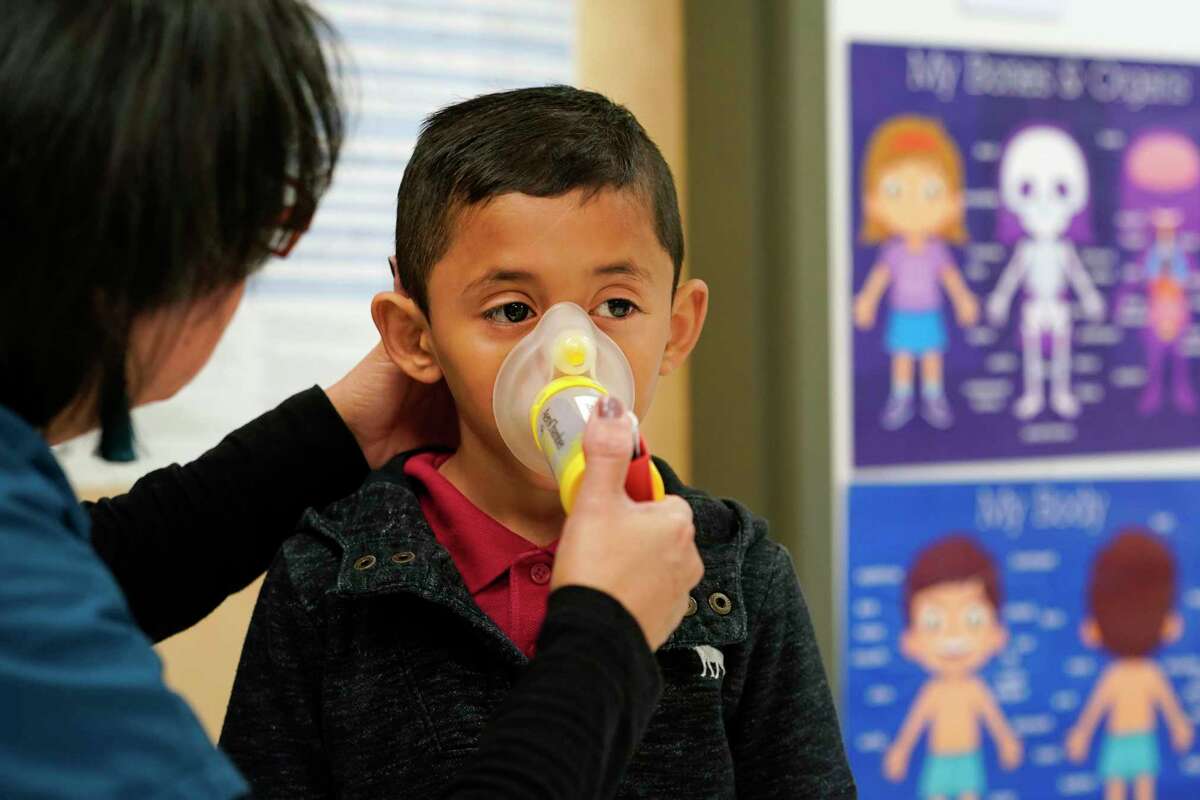
It was close to the beginning of the school year when Myrna Sonia Garcia opened her daily e-mail: it was red, which meant the air quality was “unhealthy.”
The Parker Elementary School nurse hadn’t seen a “red” day in a while. And as the only nurse for 912 students — 66 with diagnosed asthma — she worried about the new kindergartners whose medical histories she didn’t know well enough yet. She had to hope for the best and prepare for the worst.
As she does every day, she made an announcement over the school’s speakers to let teachers know how healthy the air was. They needed to be especially vigilant regarding students with asthma, she warned them, just as she had to make sure those who needed medication took it prior to going outside. On days when ground-level ozone is high or unhealthy, Houston Independent School District schools are directed to limit prolonged exercise for all children. And when it reaches purple, or “very unhealthy,” students are to avoid outdoor activity, especially if they have heart or lung disease.
For schools, having access to accurate and timely information about air pollution is vital, officials said, as it can mean the difference between managing a respiratory illness and having to call 911.
“Having poor air quality changes the school’s day,” said Gwendolyn Johnson, HISD’s director of health and medical services. “It’s all about the planning.”
Houston city officials and university researchers are using technology to better and more accurately inform the community when air quality might be particularly concerning for the most vulnerable.
